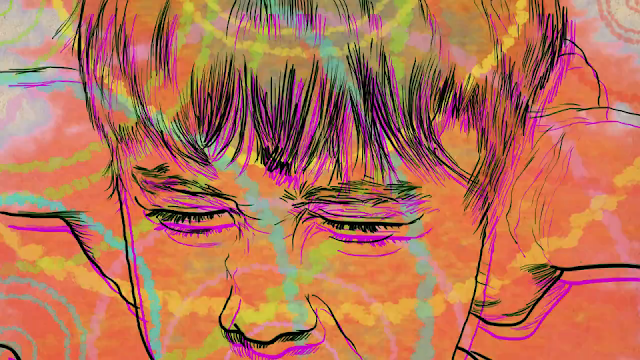When we deal with these behaviours, we must remember they come from an impossibility to self-regulate, the child is overwhelmed by a cognitive and sensory overload or in pain, they are in a self-preservation mode.
In the case of aggressive behaviour such as self harm, please always have in mind that it came from a place of great suffering, they are trying to cope with a world that is a sensory nightmare with high levels of frustration, remember that in these situations even the most basic communication attempt is difficult. Brenda Rothman, consultant, and mother of an autistic child reminds us that the child is not trying to hurt you or anybody, they are disoriented, anxious, and suffering.
What should I do?
Some models insist in blaming the challenging behaviour on the person, supporting methodologies that are focused in controlling the child, restraining them physically risking their well being, escalating the situation, and normalizing a dangerous culture of violence. We need to leave these methods behind and prioritize the safety of the individual and those around them, focusing your attention to the environment.
How to deal with a meltdown, step by step:
To handle a meltdown I rely on the S.C.A.R.E.D method, acronym inspired by the scary feeling of having or witness meltdowns which was designed by Debora Lipsky an autistic seminar presenter, speaker and consultant and Clinical Psychologist and Will Richards who works exclusively with autistic individuals.
⭐First you need to find and foster a safe place. If you find something that could be thrown or you are in a place with a lot of people nearby, don’t focus on control the child, focus in getting people and objects out of the way and getting the person in a safe place in a less stimulating environment. If a meltdown happened in the classroom or around siblings, help the person to get out or help the other people leave removing social pressure from the situation.
⭐Secondly, calm the person keeping it simple, do not lecture them, just give a simple instruction such as “Emma, stop” instead, in a strong, calm, and reassuring voice. Use a concrete or literal language that is descriptive and not evaluative. Remember to do this at the child’s level.
⭐Thirdly when you notice a de escalation, use affirmation, that means positive words such as “Emma, it’s ok to be scared”, refer to the child by name and validate their emotions, do not ask questions.
⭐Fourthly, try to get them into their safe routine to work through it. Do not attempt to interfere with stimming and provide environmental supports for them such as handing over some fidget and stim toys or dimming the lights. If you have a song that indicates a break or a time for a snack, I recommend you to use it.
⭐Fifthly, be empathetic, do not blame them asking “What’s wrong with you?” instead ask “What’s happened to you?”, do not humiliate or shame them or make them do thing they don’t understand, do acknowledge their fear and show support.
⭐Sixthly, when the meltdown is over is a good time to develop a plan for what to do next time, using the strategies that where useful. Do not rely in a generic strategy, everyone of us are and react in different ways, work with the child in develop concrete and personalized strategies to assist them in those moments.
⭐First you need to find and foster a safe place. If you find something that could be thrown or you are in a place with a lot of people nearby, don’t focus on control the child, focus in getting people and objects out of the way and getting the person in a safe place in a less stimulating environment. If a meltdown happened in the classroom or around siblings, help the person to get out or help the other people leave removing social pressure from the situation.
⭐Secondly, calm the person keeping it simple, do not lecture them, just give a simple instruction such as “Emma, stop” instead, in a strong, calm, and reassuring voice. Use a concrete or literal language that is descriptive and not evaluative. Remember to do this at the child’s level.
⭐Thirdly when you notice a de escalation, use affirmation, that means positive words such as “Emma, it’s ok to be scared”, refer to the child by name and validate their emotions, do not ask questions.
⭐Fourthly, try to get them into their safe routine to work through it. Do not attempt to interfere with stimming and provide environmental supports for them such as handing over some fidget and stim toys or dimming the lights. If you have a song that indicates a break or a time for a snack, I recommend you to use it.
⭐Fifthly, be empathetic, do not blame them asking “What’s wrong with you?” instead ask “What’s happened to you?”, do not humiliate or shame them or make them do thing they don’t understand, do acknowledge their fear and show support.
⭐Sixthly, when the meltdown is over is a good time to develop a plan for what to do next time, using the strategies that where useful. Do not rely in a generic strategy, everyone of us are and react in different ways, work with the child in develop concrete and personalized strategies to assist them in those moments.
I strongly suggest in designate a “safe place” with dim lights, away of loud noises and with a lost of calming and sensory stimulation gadgets such as sound cancelling headphones or weighted blankets. This is a space that you should build together, assuring your child of their privacy, adding some craft materials they can use to vent their frustration and anger in a healthy way, such as sheets that can tear up or color strongly and pillows or stuffed animals that they can squeeze. Relief is essential in order not to repress all those feelings; it is essential to recognize them and teach the child to find safe ways to identify them.
When the meltdown has pass and to get a hint of what the child is feeling, you must be open enough to ask them with the help of visual aids. By showing yourself as someone who listens you will nurture a relationship of trust that will facilitate their communication, which will be very helpful in identifying the triggers of the crisis.
For example, if a child engage in banging their head, the first thing you must do is to remove things that could be dangerous and, as calm as you can be, put a pad in between the surface and their head. Then, after following the steps that I previously described, if you do not have a clue about what happened, then always investigate for medical issues first, pointing body parts saying “ouch” or “hurt”, showing images and modeling the injurie or symptoms.
Please note:
✋Verbal and non-verbal language is confusing for autistic individuals, so in moments of decompensation, other forms of communication must be prioritized, such as proprioceptive if the child allows it, physically guiding him using visual aids.
✋The use of visual aids helps to anticipate transitions of place, for example if you want to take the child to his "safe space", I recommend showing him a photograph on your cell phone, the same if you need him to get in the car or to go home.
✋Meltdowns are exhausting and require lots of energy, so after it is over and the child is calm, it will be very helpful for the child if you offer him food and liquids.
✋If you present options after, they should be limited (maximum 2 or 3)
Remember that the child is in greater pain, they are not trying to hurt you, they are just using the only strategy that they know as a survival mechanism. Below I add a video from the Facebook book club page The Au-some Book Club from Not An Autism Mom. In this interview Mona Delahooke, Clinical Psychologist, speaker and autism consultant with more tan 30 years of experience, invite us in her book “Beyond Behaviours” to look at challenging behaviours as an adaptive response that we need to examine with empathy and patient.
✋The use of visual aids helps to anticipate transitions of place, for example if you want to take the child to his "safe space", I recommend showing him a photograph on your cell phone, the same if you need him to get in the car or to go home.
✋Meltdowns are exhausting and require lots of energy, so after it is over and the child is calm, it will be very helpful for the child if you offer him food and liquids.
✋If you present options after, they should be limited (maximum 2 or 3)
Remember that the child is in greater pain, they are not trying to hurt you, they are just using the only strategy that they know as a survival mechanism. Below I add a video from the Facebook book club page The Au-some Book Club from Not An Autism Mom. In this interview Mona Delahooke, Clinical Psychologist, speaker and autism consultant with more tan 30 years of experience, invite us in her book “Beyond Behaviours” to look at challenging behaviours as an adaptive response that we need to examine with empathy and patient.
You can check out the interview here: Challenging Behaviours are Adaptations
If you want to know more about how we adults have to respond in moment of check out this blog: Adult Responses to Autistic Children Lead to Escalation or Calm
If you want to know more about the S.C.A.R.E.D. method check out the book Managing Meltdowns: Using the S.C.A.R.E.D. Calming Technique with Children and Adults with Autism by Debora Lipsky and Wil Richards.








.png)
0 comentarios:
Publicar un comentario